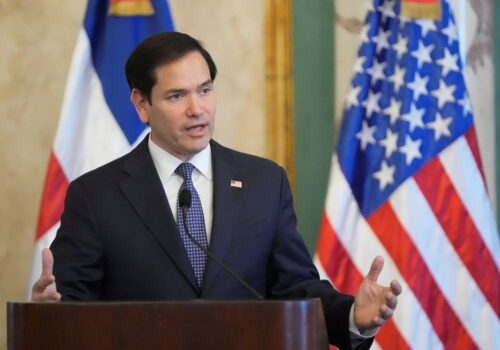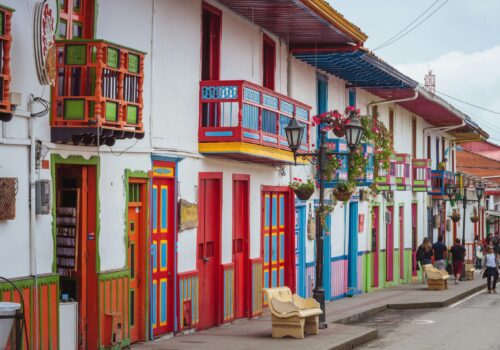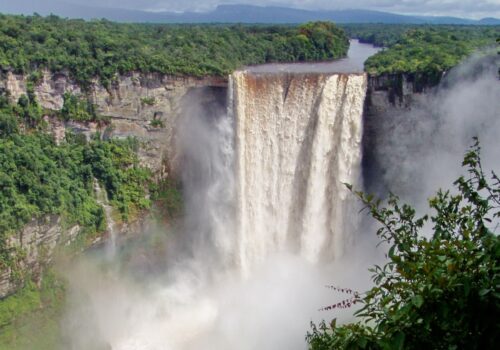Could Trump’s focus on ‘economic security’ be a boon for the Dominican Republic?
The Trump administration’s approach to Latin America and the Caribbean is taking shape. As US Secretary of State Marco Rubio wrote in the Wall Street Journal just before visiting the region in February, one goal of the administration’s “America’s First Foreign Policy” is to promote “economic security” in the region. Given the importance of this goal to the administration, it’s worth looking at it in more detail, including what it might mean for a country such as the Dominican Republic.
At the heart of economic security is a straightforward goal: The United States wants to work with partners in Latin America and the Caribbean to create reliable supply-chain environments for critical industries. This approach builds on what US President Donald Trump did during his first term: advance policies aimed at reshoring US investment, particularly from Asia. The COVID-19 pandemic and rising geopolitical tensions in the years since Trump’s first term have only underscored the vulnerabilities of long-distance supply chains.
Pragmatically speaking, however, not all sectors can benefit from reshoring. Structural differences in wages, utility costs, and, in some US states, a disparity in business tax rates are obstacles to moving some supply-chain elements to the United States. When reshoring is not feasible, nearshoring—relocating production to neighboring countries—often serves as an alternative strategy.
An additional complexity is that the administration has other goals in the region as well. The White House, for example, also wants to work with partners on preventing the sources of illegal immigration, enhancing security and defense cooperation, and targeting drug trafficking routes and transnational crime. Therefore, as the Trump administration moves forward, choosing viable economic-security partners will require balancing industrial capacity, defense, border-protection cooperation, and political alignment.
Mexico, for example, offers scale and experience. As a member of the United States-Mexico-Canada Agreement (USMCA), Mexico avoided a major blow in the “Liberation Day” global tariffs announced on April 2. The country kept zero tariffs for products meeting USMCA rule of origin requirements, meaning goods obtained or produced entirely from materials sourced from the United States, Mexico, or Canada. USMCA-reliant goods production is creating momentum for more competitive sourcing and even for investment expansion. The immediate adjacency of Mexico to the United States lowers some logistics costs and creates clear economic interdependencies within sectors such as automobiles, electronics, and aerospace.
But Mexico also faces growing headwinds: Organized crime threatens business operations. Rising labor costs reduce competitiveness. And bureaucratic inefficiencies hamper investment. These limitations open space for alternatives in the relocation of critical supply chains within the region.
The Dominican Republic’s strategic opportunity
The Dominican Republic, with its strategic location, favorable trade conditions, and demonstrated commitment to shared security goals, offers an increasingly attractive alternative—if it can move swiftly to close its infrastructure and human capital gaps. Seizing this moment could anchor Santo Domingo firmly within the next phase of the US economic security strategy in the Caribbean and beyond.
The Dominican Republic has:
- A longstanding partnership with the United States: Over a century of close ties in trade, investment, and security cooperation.
- Robust trade frameworks: A twenty-year-old free trade agreement supporting a US trade surplus and granting the Dominican Republic privileged market access. Notably, the Dominican Republic was subject to only a 10 percent reciprocal tariff during “Liberation Day,” a lower rate than many countries in the region.
- Growing investment appeal: Advanced free-trade zones, a modernized investment regime, and leadership in sectors such as tourism, financial services, light manufacturing, and emerging semiconductor assembly
Moreover, the Dominican Republic has collaborated with the United States on immigration control and security operations. For example, over thirty tons of cocaine were seized in coordination between Dominican armed forces and US agencies last year, and the Dominican Republic has increased its border defense deployment with Haiti to cooperate on the prevention of illegal migration to the United States. It has also taken on greater regional leadership, including through hosting the tenth Summit of the Americas this coming November. All these initiatives signal strategic alignment with US policy goals.
Challenges on the road to the relocation of supply chains
Despite its promise, the Dominican Republic must address several critical gaps:
- Infrastructure constraints: Although the Dominican Republic has made notable improvements, significant gaps remain, particularly in logistics and energy infrastructure. The Dominican seaport system has expanded to handle greater cargo volumes, but in the case of terrestrial transportation, internal road networks still suffer from congestion and maintenance issues, causing inefficiencies in the domestic movement of goods. Similarly, electricity outages are still present, especially outside urban centers, and have raised concerns among manufacturers seeking reliable operations.
- Skilled labor shortages: While the country boasts a young and growing workforce, there is a mismatch between available labor and the specialized skills needed for high-value manufacturing industries like electronics or semiconductors. For instance, despite interest from major tech investors, the Dominican Republic has had to rely on imported technical expertise for some advanced manufacturing projects.
- Slow pace, red tape: Slow permitting and regulatory bottlenecks frustrate investors. In pre-pandemic rankings, the Dominican Republic trailed regional peers such as Chile and Colombia in the World Bank’s Ease of Doing Business indicators.
- Regional competition: The Dominican Republic is not alone in seeking to capitalize on the nearshoring boom. Countries like Costa Rica, which offers a well-developed tech sector and a reputation for political stability, and Panama, with its logistics advantages via the Panama Canal, are strong competitors. Both are aggressively courting foreign investment in similar sectors, adding pressure on the Dominican Republic to further differentiate itself.
How the Dominican Republic can seize the moment
To solidify its position as a hub for relocating supply chains and deepen economic security ties with the United States, the Dominican Republic should:
- Streamline customs and regulatory processes to accelerate business setup and supply chain integration.
- Expand public-private partnerships in infrastructure to address logistics and energy-reliability gaps, while offering an alternative to Chinese-backed projects, particularly in critical supply chains such as rare minerals, cybersecurity, and fintech.
- Invest in workforce development focused on high-value manufacturing skills to attract and retain global investors.
Ultimately, both Mexico and the Dominican Republic, as well as other Latin American countries, offer distinct advantages and disadvantages as supply chain relocation destinations. Mexico’s established industrial base and USMCA membership provide a strong and solid foundation, though security concerns, rising labor costs, and bureaucratic inefficiencies pose real challenges. The Dominican Republic’s strategic alignment with the United States and proactive investment strategies are promising, but addressing infrastructure needs and economic diversification will be crucial.
Choosing a viable economic security partner for the United States depends largely on the specific needs and priorities of individual businesses and industries. The Dominican Republic offers an interesting potential in the complexities and opportunities inherent in the US strategy in the Western Hemisphere. Its strategic positioning and economic strengths provide a promising foundation for deeper US collaboration, but fully realizing this potential requires confronting and overcoming the present challenges.
Enrique Millán-Mejía is a senior fellow for economic development at the Atlantic Council’s Adrienne Arsht Latin America Center.
Further reading
Tue, Mar 25, 2025
The US needs to build a new Caribbean policy. Rubio’s trip to the region can be the first step.
New Atlanticist By Wazim Mowla
US engagement with the Caribbean should prioritize energy investments and efforts to reduce violent crime in the region.
Fri, Dec 20, 2024
Latin America and the Caribbean in 2025: Ten predictions to shape the year ahead
Spotlight By
As we look to 2025, what will define the future of Latin America and the Caribbean? How will the region navigate the changing global economy and the challenges posed by climate change, migration and security? With new leadership in the US, how will Washington engage with the region moving forward? Join in and be a part of our ten-question poll on the future of LAC.
Mon, Dec 16, 2024
Guyana’s low-carbon model for resource-led development
EnergySource By Liliana Diaz
Guyana has emerged as a model for balancing economic development with environmental stewardship. Showing how the two goals need not conflict, Guyana is both capitalizing on its recent oil discoveries while also being a pioneer in biodiversity credits, expanding protected areas, and using oil revenue to finance renewable energy projects.
Image: Dominican Republic President Luis Abinader gives a joint news conference with U.S. Secretary of State Marco Rubio (not pictured) at the National Palace in Santo Domingo, Dominican Republic, Thursday, Feb. 6, 2025. Mark Schiefelbein/Pool via REUTERS



